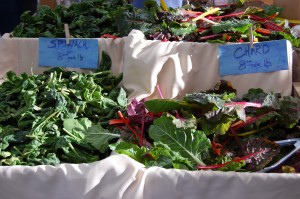Author: Renée Cho22
-

How Green is Local Food?
Local food proponents often claim that food grown close to home helps prevent global warming because it requires less fossil fuels to transport, generating fewer greenhouse gas emissions than conventionally produced food. But just how green is local food?
-

Preparing for a Future of Perpetual Drought
The Intergovernmental Panel on Climate Change projects that droughts will likely increase in central North America this century. How can we prepare for a future of perpetual drought?
-

Turning Concern into Action: 12 Ways to Combat Climate Change
With the incidence of extreme weather on the increase, concern about global warming is also growing. This concern needs to be turned into action—whether local, regional or national. Here are a dozen ways to take action.
-

Connecting the Dots: Extreme Weather and Climate Change
Professor Ben Orlove, anthropologist and co-director of the Earth Institute’s Center for Research on Environmental Decisions discusses the connection between extreme weather and global warming, and public perception of climate change.
-

The Double-Edged Sword of Geoengineering
Shooting sulfur particles into the stratosphere to reflect the sun? Dumping iron into the ocean to boost the absorption of carbon dioxide? Could these far-fetched and dangerous-sounding schemes—geoengineering—help avert potentially catastrophic effects of climate change, or would they exacerbate conditions on our ever warming planet?
-

Why Soil Matters
Soil is the source of all life. Yet “we know more about soils of Mars than about soils of Africa,” says Pedro Sanchez, director of the Earth Institute’s Tropical Agriculture and the Rural Environment Program. To remedy this situation, the Earth Institute is taking part in an ambitious undertaking to map the world’s soils.
-

Facing the Food and Water Challenges of the Future
The global population, now 7 billion, is expected to reach 9 billion by 2050 and will require 70 percent more food than we are producing today, and much more water for agriculture, drinking and industry. Will we have enough water to meet the demand?
-

Indian Point: Safe, Secure and Vital or an Unacceptable Risk?
The owners of Indian Point nuclear power plant want to re-license the facility for 20 years. Opponents say the plant is unsafe and we can do without its electricity. Supporters say it’s safe, and we need the power.
-

Data’s Power to Spur Environmental Progress
In January, 132 countries received their environmental report cards. The Environmental Performance Index has goaded leaders into action by letting them see their countries’ strengths and weaknesses compared to other countries.
